*This post may contain affiliate links. Read more »
Think all curry powders are basically the same? That’s because the store-bought brands are boring as heck, and rarely even contain curry leaves at all. After lots of testing and refinement, I can confidently say that this Madras curry powder recipe is better than all the store-bought brands I have tried.


Enter your email & I'll send it to your inbox. Plus, get great new recipes from me every week!
By submitting this form, you consent to receive emails from Cinnamon Snail.
Jump to:
🥰Why you'll adore this recipe
🌱 Fresher and more customizable: This classic masala recipe allows you to create a spice blend that’s tailored to your taste, ensuring fresher, more vibrant flavors than store-bought alternatives. Plus, like all of my vegan Indian recipes it’s 100% cruelty-free and has no preservatives. It is one of my gluten-free vegan recipes, too.
🪷 Pure & Sattvic: This spice blend does not contain onions or garlic, making it one of my sattvic vegan recipes, suitable for use in dishes that will become bhoga offerings, and it is also one of my Ekadasi recipes since it contains no grains or legumes.
⏱️ Quick as a Cat: With straightforward instructions and minimal cleanup, you’ll have this Indian spice blend ready to upgrade your curries ASAP.
✅ Tested and Approved Worldwide: Like all of my plant-based recipes, this curry blend has been tested by a team of over 350 recipes testers from around the planet. Whether you’re in New Jersey, New Delhi, or a new planet in the solar system where you have to make curries with alien plant matter, rest assured that this recipe will reliably work.
🤷♀️ What is Madras Curry Powder?
I know this sounds like a dumb question but think about it for a second. Notice how you rarely see curry powder mentioned in authentic Indian recipes?
Learning to cook in India made me question why this stuff is used so prevalently in the West, but rarely ever in India. There are British, Irish, and even Japanese curries now, and lovely as they are, none of them taste like the food I have grown to love from all over North and South India.
Madras curry powder, named after the South Indian city of Madras (now Chennai), was popularized by Indian merchants who sold it as a sort of “Instant Indian food magic bullet” to Brits and British colonists in the 18th century. Colonists wanted to recreate the flavors of Indian cuisine back home. Unlike traditional Indian spice blends that are usually made fresh for each dish, Madras curry powder was created as a convenient pre-mixed spice blend. It typically includes turmeric, chili, coriander, cumin, and fenugreek, which contribute to its distinctive heat and vibrant yellow color, without being heavy in spices or heat, which were still a little foreign for tame European tastes.
That doesn’t mean the stuff is inauthentic. On the contrary, great curry powder captures this particular style and philosophy of cooking. So you will not find distinctly Indian (and potentially hard to find) ingredients like kasuri methi and amchur here.
What you DO get is a versatile seasoning that is at home in Malaysian mee rebus, as it is sprinkled on popcorn with nutritional yeast, used to make a quick spinach chickpea curry, or used to jazz up your tofu tikka masala.
Grab your favey pan or cast iron skillet, because this spice is gonna make your house smell awesome and be all yours in the next twenty minutes with very little effort.
🌶️ Ingredients
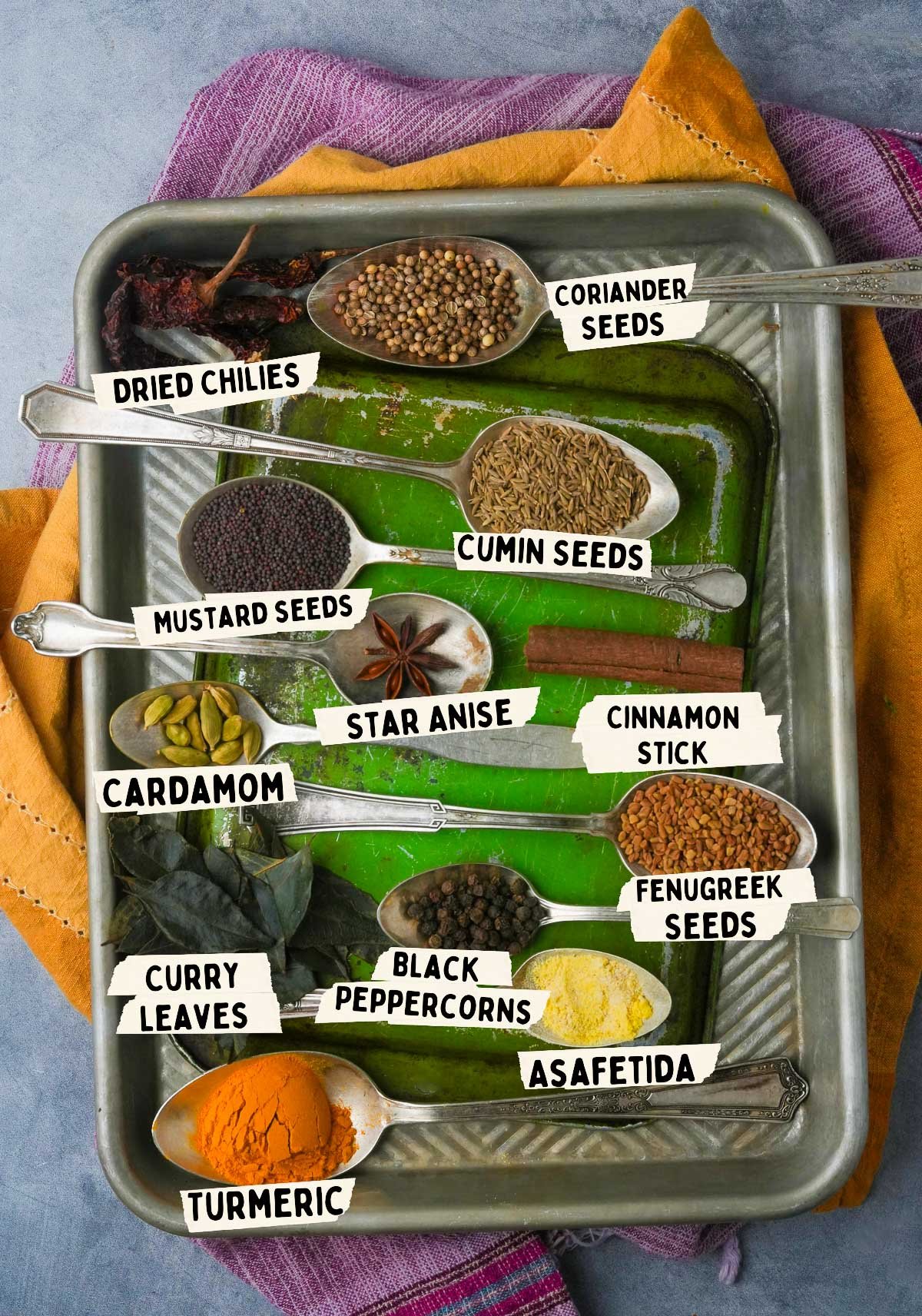
Dried Chilies
Dried Kashmiri chilies are the standard for madras curry powder, because they have a bright red color, and aren’t very spicy. I consider the powdered version of this spice to be like India’s version of paprika, and you will find it in many dishes, such as soya chaap, Indian mango pickle, and aloo palak to name just a few.
Byadagi chilies hail from the Karnataka region of India, where I used to spend almost every winter in Mysore. These mildly spicy red chilies are known for their subtle smokiness and mild heat. I use them in a lot of tadkas, such as in my sattvic peekangai kootu and arhar dal tadka recipes.
If both of these chilies are hard to find (any decent Indian grocery store will definitely have one or the other), you can use dried ancho chilies (which I use in my jackfruit tamales), New Mexico chilies (aka Hatch chilies, which make a slammin’ red chili sauce), or chili arbol, which are quite a bit spicier.
Asafetida
This pungent resin, known as "hing" in Hindi, and sometimes spelled asafetida, is used in small quantities to add a pungent flavor and aid digestion. I use it in a lot of sattvic recipes where onions and garlic aren’t used, from massoor dal to this kala chana dry recipe, and parval sabji. I prefer powdered asafetida for this recipe because it is much easier to measure accurately than dark-colored blocks of asafetida resin. However, if you are gluten-free, double-check that the asafetida you use doesn’t contain wheat starch, which is commonly used as an anti-caking agent in the powder.
Fenugreek Seeds
Methi seeds (aka fenugreek) are commonly used in pickles like gajar ka achar and mango achar, and I use them in my own instant achaar masala blend. Fenugreek seeds bring a nutty flavor and aroma to the curry powder, and they are known to aid digestion and regulate blood sugar levels.
Curry Leaves
One of the most wonderful aromas you can get out of your kitchen comes from cooking curry leaves! You can pick them up at most Indian grocery stores, or grow your own as a house plant! They are fairly easy to keep alive and happy. Curry leaves are used in tons of Southern Indian recipes such as aviyal, turai sabji, and even some non-Indian dishes like nasi minyak, a fragrant basmati rice dish from Indonesia.
Cumin Seeds
Cumin seeds, known as Jeera throughout most of India, add a warm, earthy undertone that is one of the most noticeable flavors in any good curry powder. If I had to choose one variety of cumin seed to get stranded on an island with, there is no question that my choice would be the wild mountain cumin from Burlap and Barrel. I use it in everything from Arbi Sabji, Bottle Gourd Curry, and nourishing yellow arhar dal to non-Indian recipes like Indonesian bumbu Bali and Thai Red Curry Paste.

Get my fave cumin seeds for free!
Using this link, add the wild mountain cumin to your cart, spend at least $15 on some of the other absurdly good spices from Burlap & Barrel (they all seriously slap) and the bottle of this bangin' wild mountain cumin becomes FREE, and you will love it so much.

*See the recipe card at the bottom of the page for exact quantities, nutritional info, and detailed cooking directions.
🤯Variations
Keralan-Style Curry Powder
Add a touch of lightly roasted coconut flakes, a half teaspoon of dried ginger, and go a bit heavier on the curry leaves for a distinctly South Indian flavor that pairs beautifully with dishes like olan, or parotta.
Gujarati Curry Powder
Mix in a few ground fennel seeds, a small bit of jaggery to taste, and dried mango powder (amchur) for a tangy, slightly sweet/tangy profile that works wonderfully with dishes like turai ki sabji or Gujarati-style daliya khichdi.
Japanese Curry Powder
With mild heat from ichimi togarashi, and fewer warming spices, my Japanese curry powder recipe is the perfect thing to make stuff like tofu karaage, and obviously, vegan Japanese curry with.
📖 How to make Madras Curry Powder
Have success blowing every other curry powder you’ve tried outta the dang water on your first shot by following these step-by-step photos with helpful tips. Or scroll down to the bottom of this page for the easy-to-print recipe card.
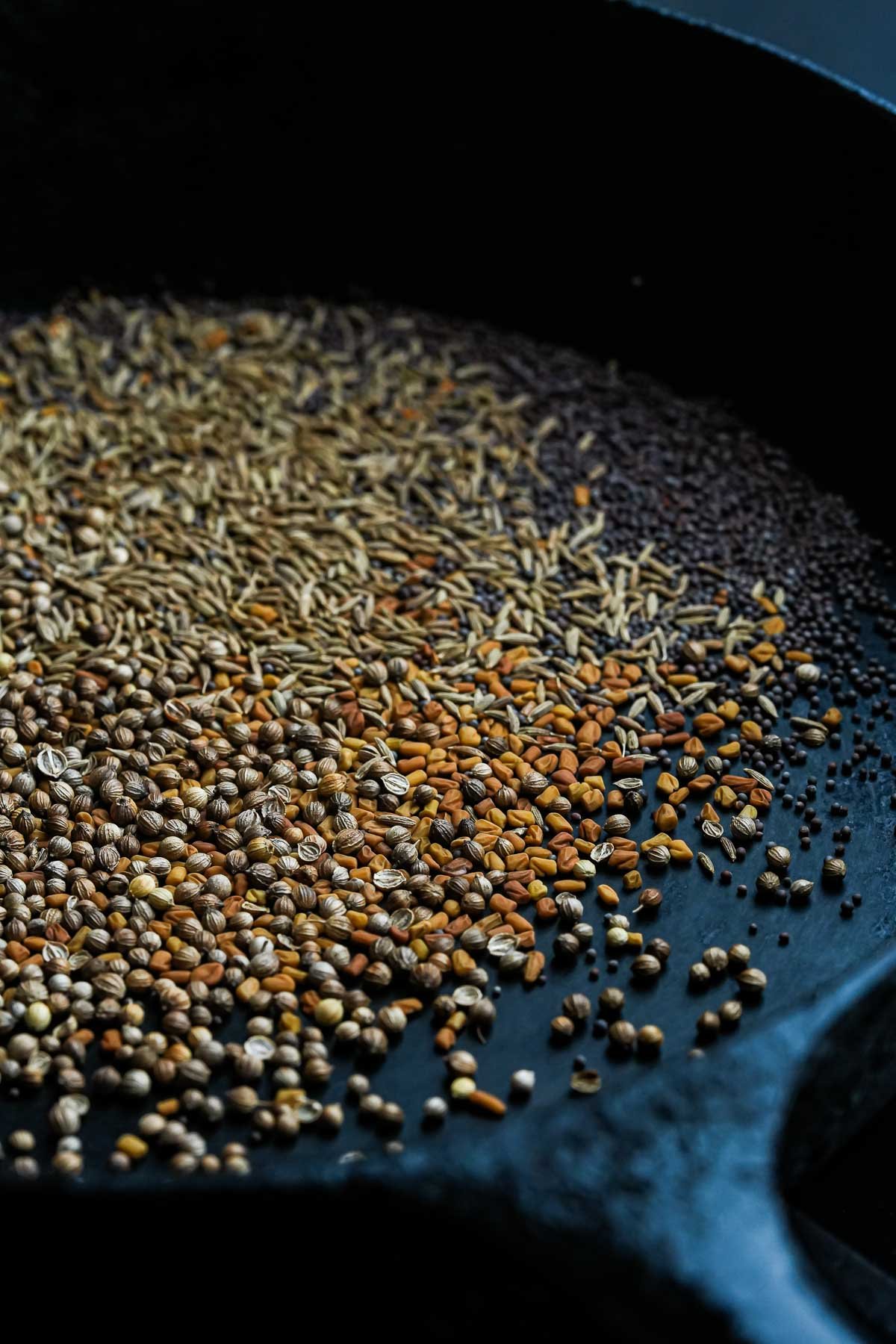
Step One
Roasty Toasty:
Heat a dry skillet over medium heat. After two minutes, when the pan is hot, toast the whole coriander seeds, cumin seeds, fenugreek seeds, and brown mustard seeds. Stir frequently for about three minutes until they start to crackle and release their aroma.
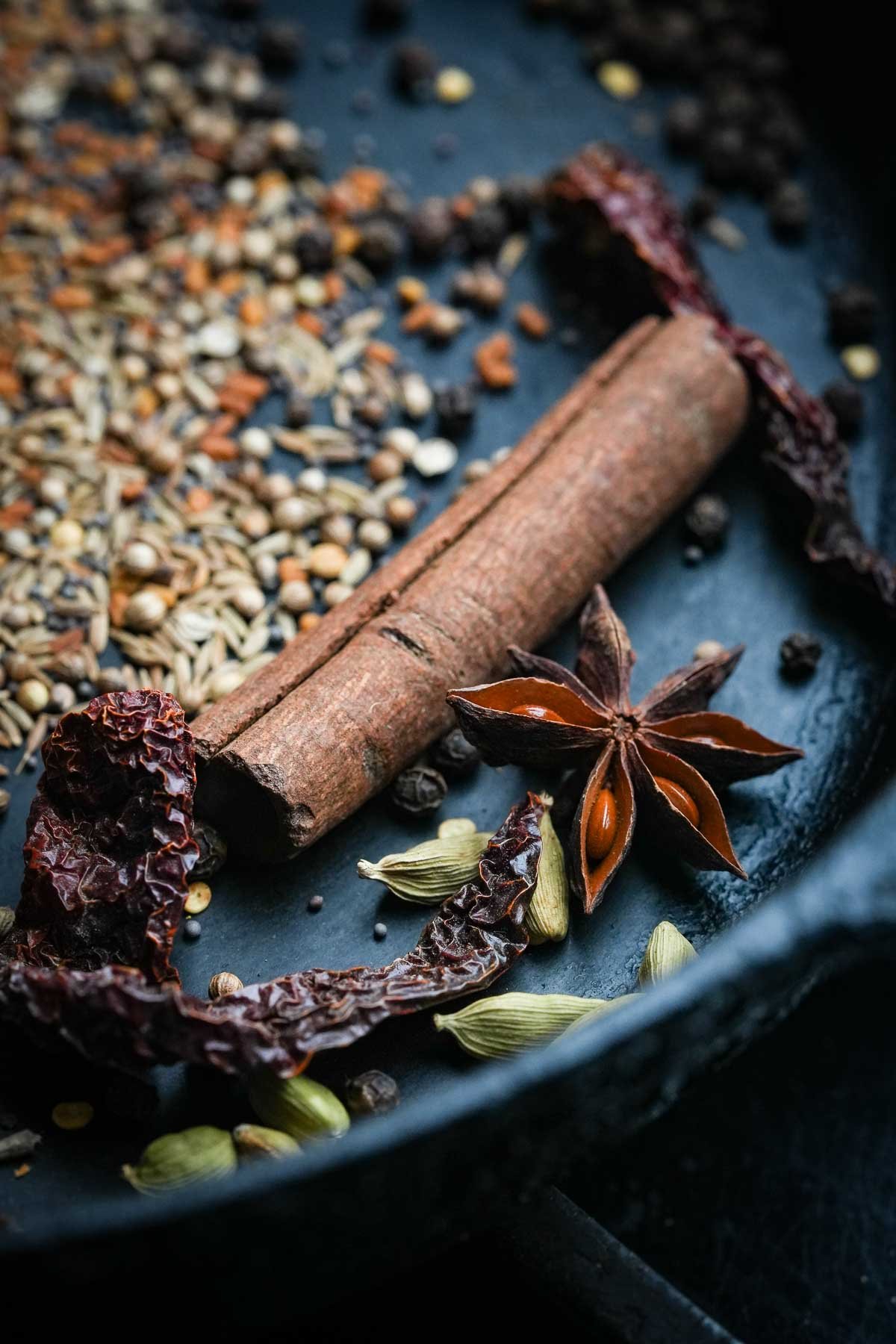
Step Two
Add the more sensitive stuff:
Add the whole star anise, cinnamon (or cassia bark), green cardamom pods, black peppercorns, and dried chilies to the skillet. Continue toasting the mixture for another two minutes, stirring constantly to avoid burning.
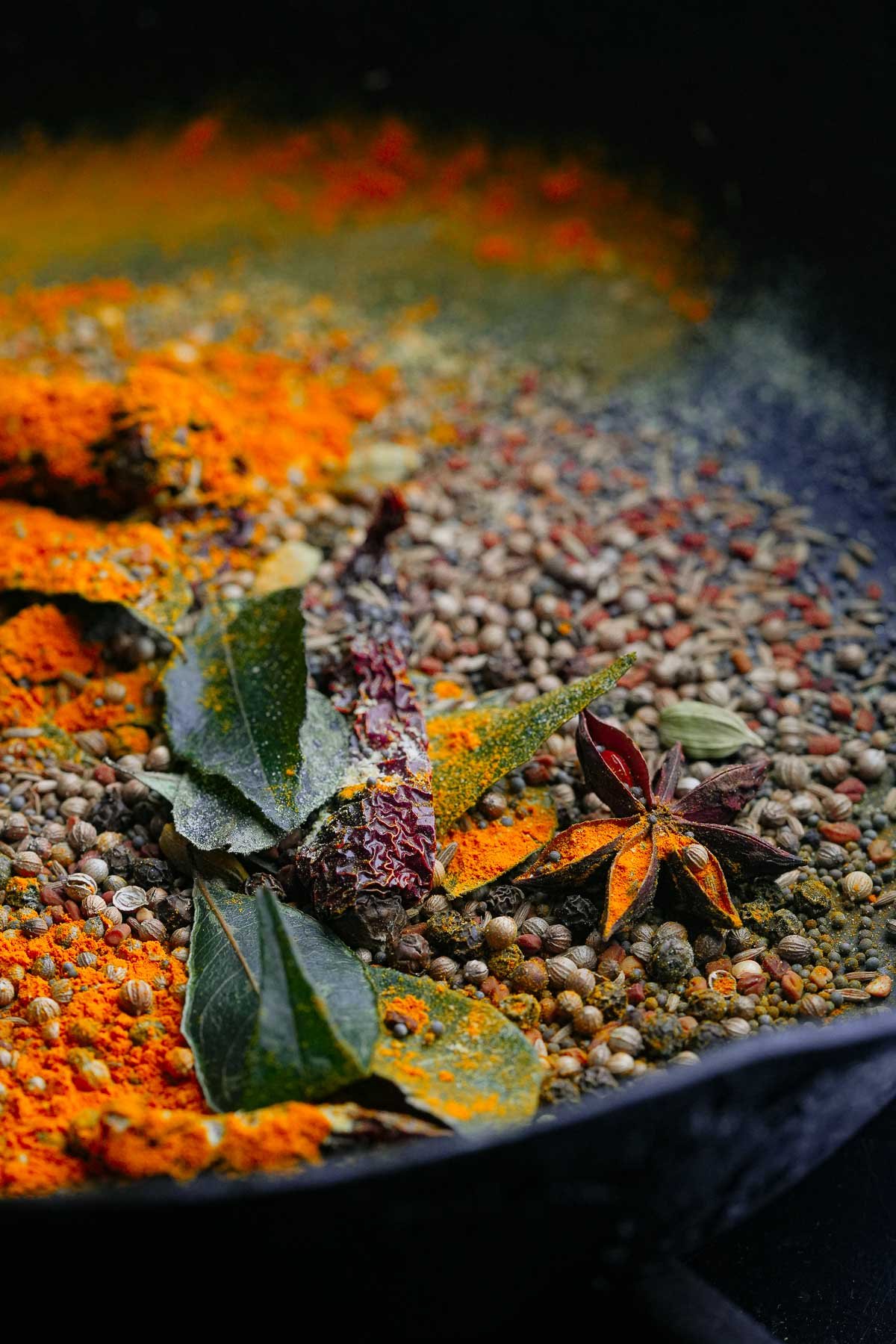
Step Three
Don’t leaf out the namesake:
Turn off the heat, and stir in the curry leaves, turmeric, and asafetida. Let the curry leaves dry slightly from the pan's residual heat for ten minutes as the contents cool.
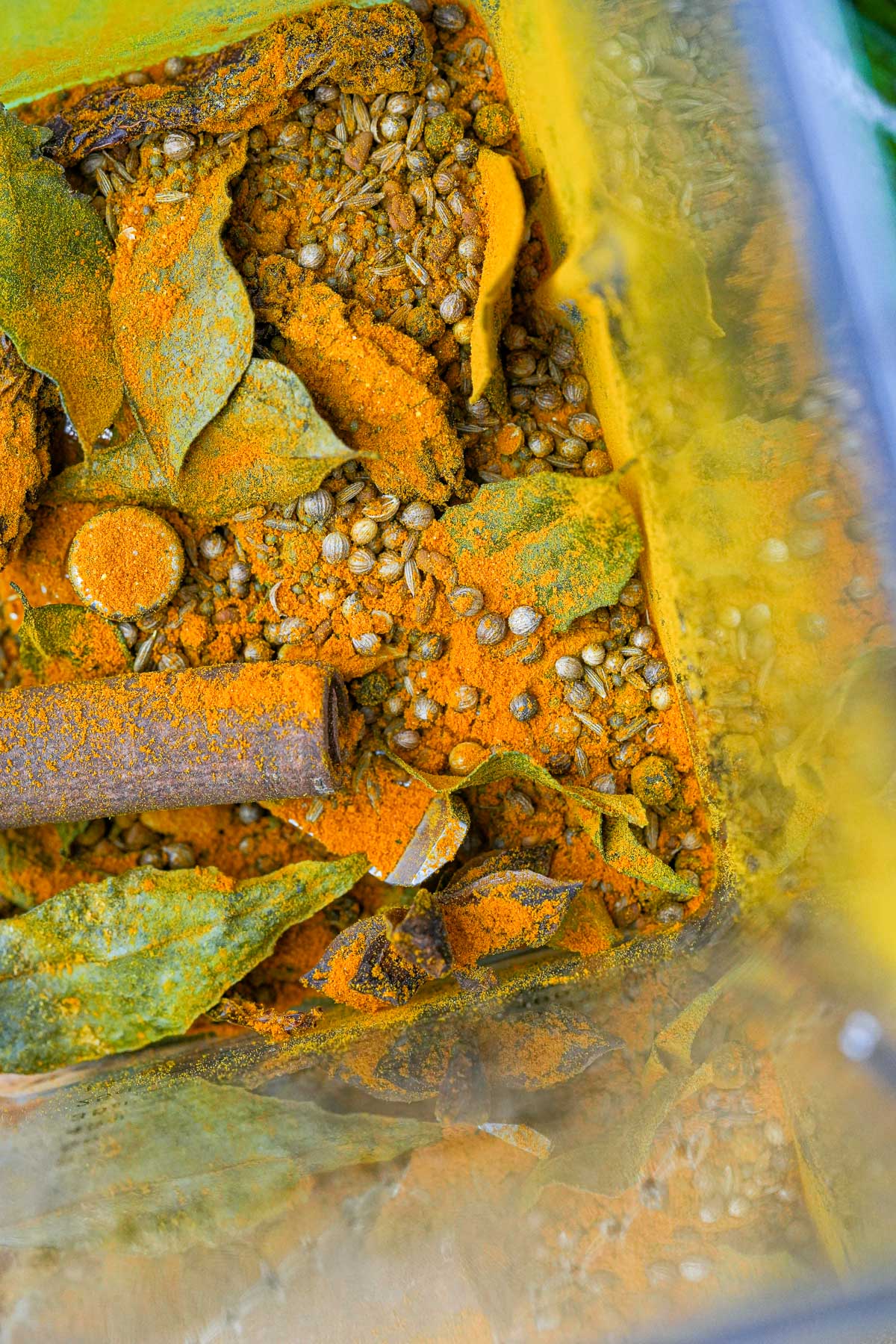
Step Four
It’s not powder just yet:
Grind the cooled spices into a fine powder using a spice grinder, high-speed blender, or mortar and pestle.
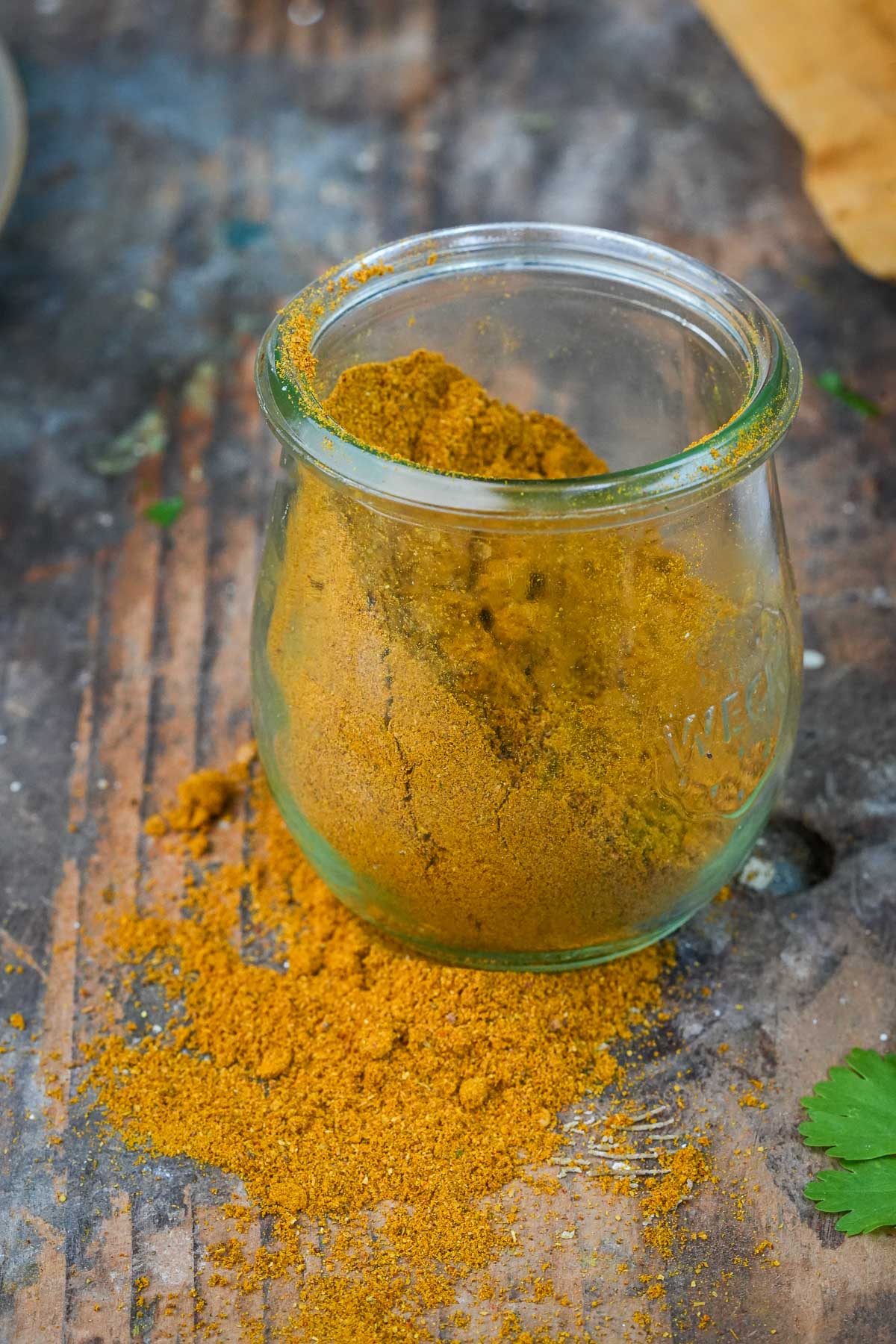
Step Five
Cool and Store:
Transfer the ground spice blend to a jar for storage. Place the lid on the jar only when the curry powder has reached room temperature.
💡Serving Ideas
Make even better, more colorful Aloo Papri Chaat by first tossing the papdi crackers in a small amount of this curry powder.
Make meaty (but still purely vegetarian) dishes like kathal ki sabji and your homemade seitan-based vegetarian butter chicken even better with a dash of this curry powder to taste.
What's that?!? You want to make non-Indian curries too? This particular blend is actually my top choice for making everything from Malaysian curry laksa, to vegan Japanese curry, and Vietnamese cari chay!
👉Top tips
- Don’t over-toast: We just want to enhance the flavors of the spices by lightly toasting them. Especially if you have a thinner pan, use controlled low-medium heat, and don't toast them for so long that they darken or become bitter.
- A quality blender makes this a snap: Especially if you are going to multiply this recipe for a larger batch, using a solid high-speed blender makes it easy to get a complex fine curry powder. My ride-or-die Blendtec has been a blender I have relied on personally and professionally for over 20 years. These blenders are absolute beasts.
- Crucial cooling: after toasting the spices, make sure to let them cool to room temperature before grinding. Otherwise, the moisture of the oils in the spices which is brought out from the heat, has the potential to make the spice mixes cake up, and can lead to a shorter shelf life before the spice goes rancid.
🤷♀️ Recipe FAQs
Store Madras curry powder in an airtight container in a dark, cool place to keep it fresh and prevent clumping. It can last for one to two months at room temperature or up to six months if frozen. The main thing is to keep it dry, so never take it from the jar with a wet utensil or wet fingers.
Yes, you can substitute Madras-style curry powder for regular curry powder, but be mindful that some vegan Malaysian recipes call for a slightly different style mixture, heavier on warming spices. This curry powder will still work very well in those recipes.
Madras curry powder is typically spicier and more intense than standard alternatives, some of which can be downright weak! It often includes chili, turmeric, fenugreek, and mustard seeds, giving it a distinctive heat and color. An authentic Madras curry like this recipe will also have some curry leaves in it. If you look at a recipe that doesn’t have curry leaves, then run!
Garam masala is an authentic, used-in-India spice mix made from warming spices, usually containing cloves, cinnamon, cardamom, cumin, black pepper, and coriander (sometimes other stuff too, but you get the idea).
On the other hand, curry powder came about in the 1800s for the British colonists who would return home longing for the curry flavor they experienced in India, but were unable to get some of the exotic spices at home. It tends to be milder, less warming, and yellow or orange from the predominance of turmeric and Kashmiri chili. It tends to be used more in westernized Indian cooking than in classical desi recipes where spices are more customized and the flavors are more nuanced.
Yes, Madras curry powder is naturally gluten-free, as it consists solely of ground spices. If you are gluten intolerant, double-check that your asafetida (hing) doesn’t contain wheat starch as an anti-caking agent.
✌️My faves to cook with madras curry powder:
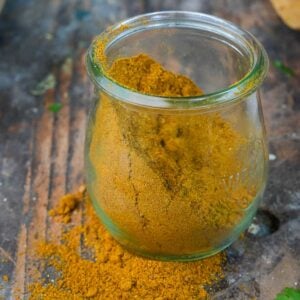
Madras Curry Powder
Ingredients
- 2 tablespoons whole coriander seeds
- 1 tablespoon cumin seeds
- 1 tablespoon fenugreek seeds
- 2 teaspoons brown mustard seeds
- 1 whole star anise
- 4- inch cinnamon or cassia bark
- 10 whole cardamom pods
- 1 tablespoon black peppercorns
- 4 dried Kashmiri chiles or byadagi chilies
- 20 curry leaves
- 1 tablespoon turmeric
- ½ teaspoon asafetida
Instructions
- Heat a dry skillet over medium heat. After 2 minutes, when the pan is hot, toast the whole coriander seeds, cumin seeds, fenugreek seeds, and brown mustard seeds. Stir frequently for about 3 minutes until they start to crackle and pop and release their aroma.
- Add the whole star anise, cinnamon (or cassia bark), green cardamom pods, black peppercorns and Kashmiri chilies to the skillet. Continue toasting the mixture for another two minutes, stirring constantly to prevent burning.
- Turn off the heat and stir in the curry leaves, turmeric and asafetida. Let the curry leaves slightly dry from the heat of the pan for 10 minutes as the contents of the pan cool.
- Grind the spices to a fine powder in a spice grinder, high-speed blender, or mortar and pestle.
- Transfer the ground spice blend to a jar for storage, placing the lid on the jar only when the curry powder has cooled to room temperature.
Notes

Enter your email & I'll send it to your inbox. Plus, get great new recipes from me every week!
By submitting this form, you consent to receive emails from Cinnamon Snail.

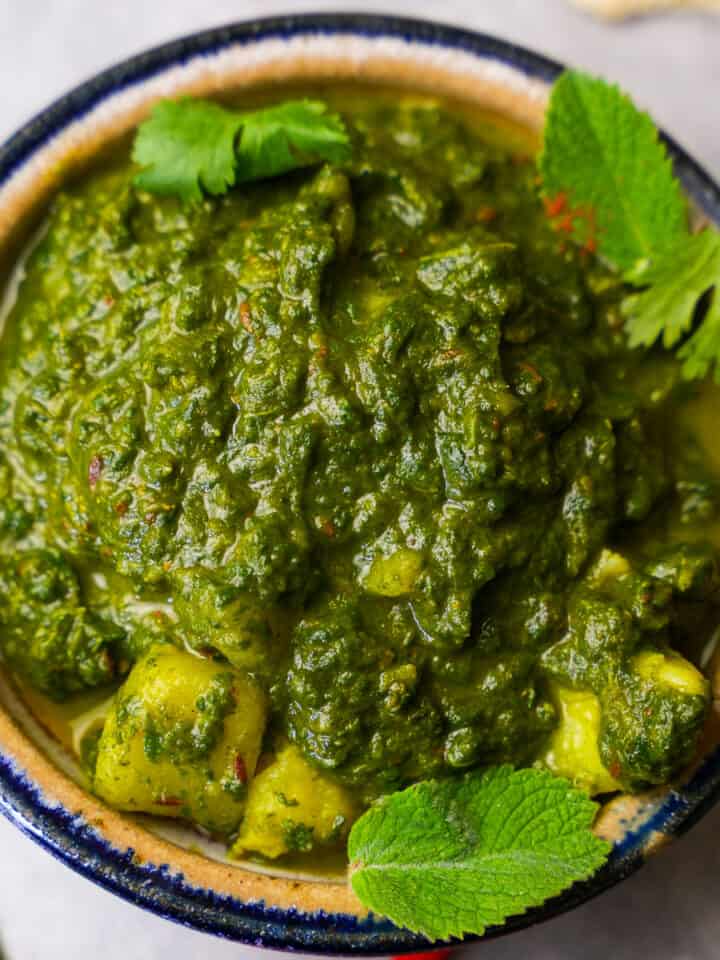
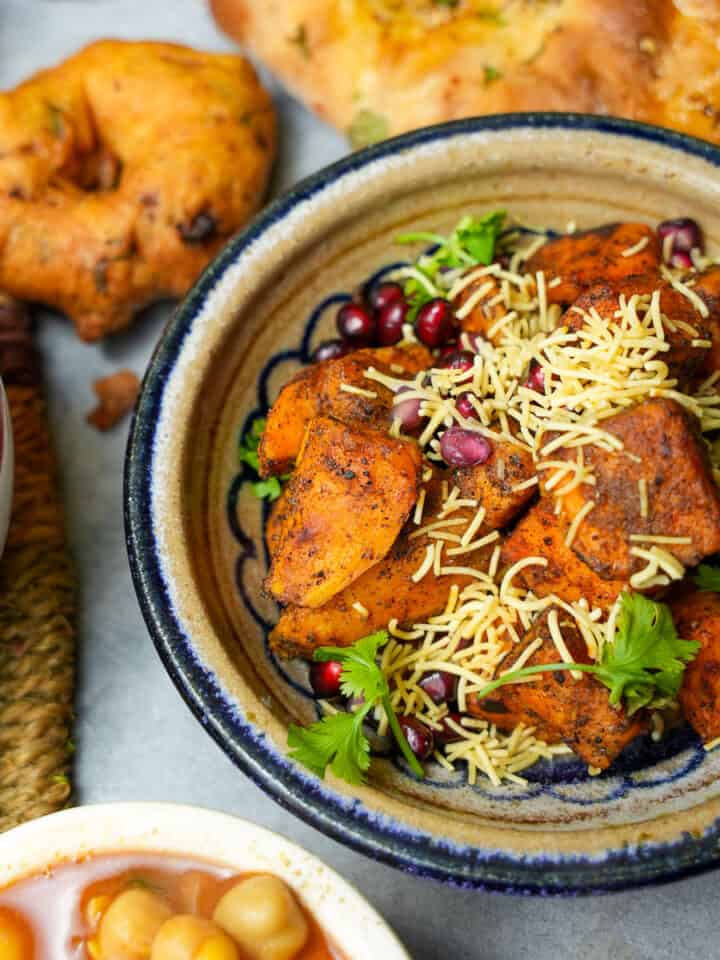
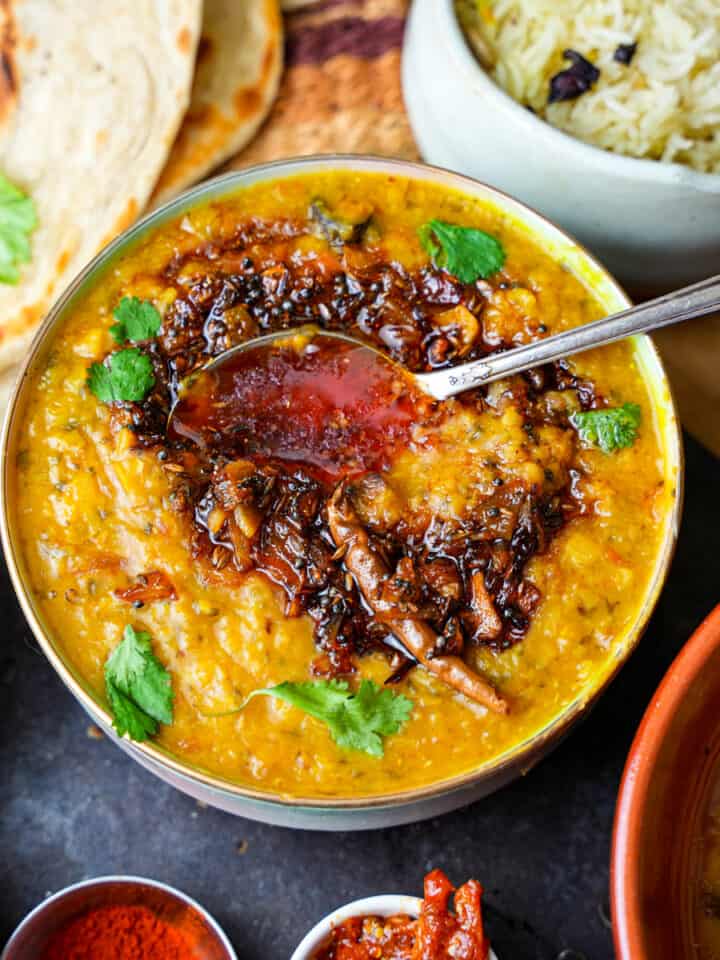





Dosa Princess says
Easy to make and modify if you are a little scared of chiles. Make ahead and keep in your store cupboard for curry nights.